


A collection of large flowers beautifully covers the outer pocket of this tote bag. The opening of the outer pocket is accented by folding back the solid dark blue-grey echino fabric used for the lining. The outer pockets around the bag are useful for sorting small items. The fabric used is a new pattern [nabana] from the series commemorating echino’s 15th anniversary. It depicts a landscape pattern of large blooming flowers growing upright.
Fabric shown for this sample:(Outer Fabric, Patch Fabric) EKX-97400-400D
(Panel Lining Fabric) JG-95410-10K
(Pocket Lining Fabric, Bottom Fabric) JG-95410-10O
Materials:
□ Fabric (Outer Fabric, Patch Fabric): 110cm wide×1m
(Panel Lining Fabric): 53cm×80cm
(Pocket Lining Fabric, Bottom Fabric): 100cm×60cm
□ Fusible Interfacing: 90cm x 1.1m
□ Tape: 4.5cm widex2.5m
□ Magnetic Hook (Insert type): One pair (1.8cm diameter)
Size: 31cm (l) 51cm (w – opening) 35cm (bottom) 16cm (d)
We interviewed Yuki about her creation:
Kokka Fabric (KF): What did you think of the fabric you used for this project?
The pattern and colors were seasonal, so I was excited to create a piece that would be perfect for the season. While the pattern is large, I designed it so that I could make the most of all the elements. I am glad that the finished bag has a feel of a story behind it.
KF: Can you tell us any special elements or ideas that you incorporated into this creation?
This time, I tried to tailor it like it was a canvas, a material which is usually avoided for household sewing machines. For this reason, I tried to make it look the same as when making it with canvas, though I have not usually applied interfacing to canvas fabric. By adding tucks to the outer pocket to create more room, it generated a lively look for the pattern, making the bag more stylish than expected.
KF: What are some tips for making this bag?
It is possible to finish without applying fusible interlining, but if you want to create some structure, as in this case, it is recommended to utilize the interfacing. This bag with tucked pockets, if the matchmarks are misplaced, the entire shape will be misaligned. Be sure to check the position of the first mark before proceeding. The process is basically the same even if the width of the handle changes. If the width is too wide, please change the width of the handles you prepare. Since this article is posted for the winter season, I made the shoulder a little longer to match a winter coat. If you want to make it in summer with a different fabric, shorten the handles by 5cm to fit your body and make it easier to carry. You will enjoy making this bag more if you imagine how you will use it in each season. I hope you will enjoy choosing fabrics when the seasons change!
KF: How should we incorporate this bag into one’s styling?
This time, since the article is published in winter, I dared to match it with a seasonal brown color from the selection of kokka’s fabric, which is usually characterized by its pop and bright patterns. This is a large open tote that is convenient for shopping, traveling, and family visits. It also has a lot of outside pockets for sorting small items when you have more luggage on your trip. Of course, it also works great as an eco-friendly bag! I hope you will find it useful for different purposes.
KF: Thank you very much, Yuki! Here are sewing instructions along with step by step photos from her. Enjoy crafting!

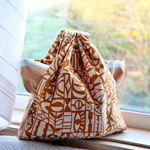 Tucked Handle Bag Sewing Instructions
Tucked Handle Bag Sewing Instructions Tote Bag with Side Pockets -Sewing Instructions
Tote Bag with Side Pockets -Sewing Instructions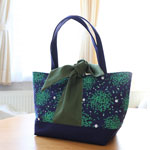 Ribbon Tote Bag -Sewing Instructions
Ribbon Tote Bag -Sewing Instructions
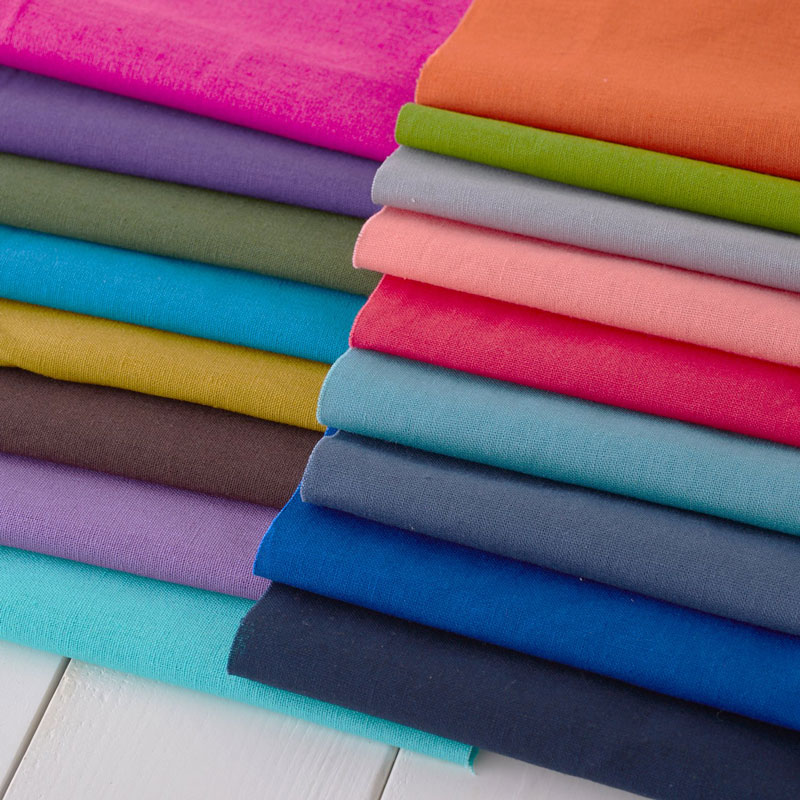
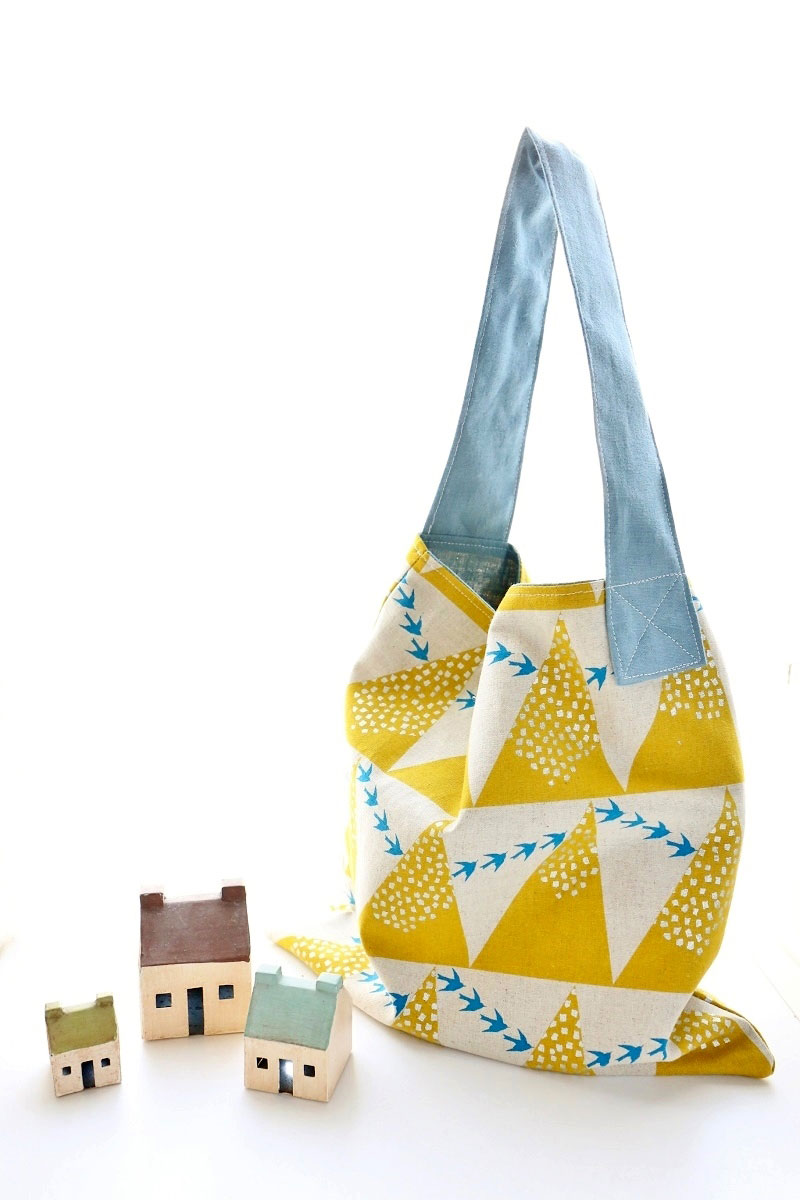
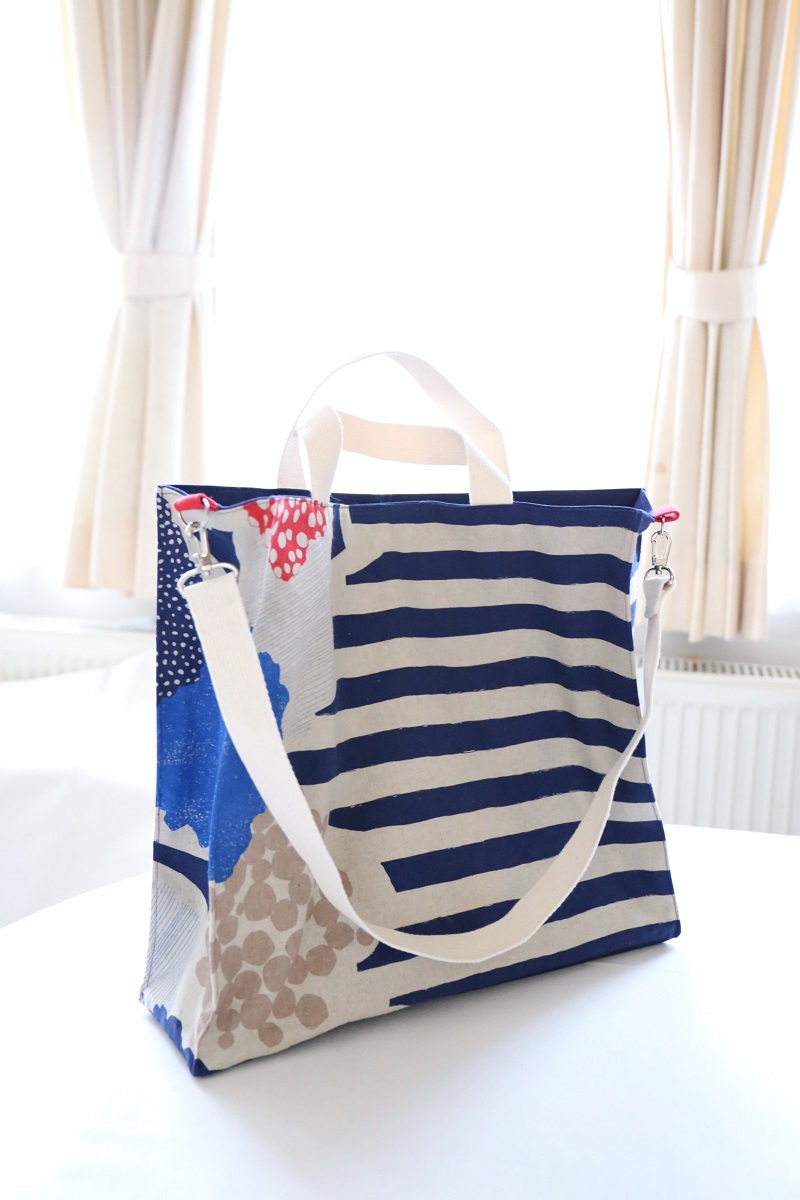
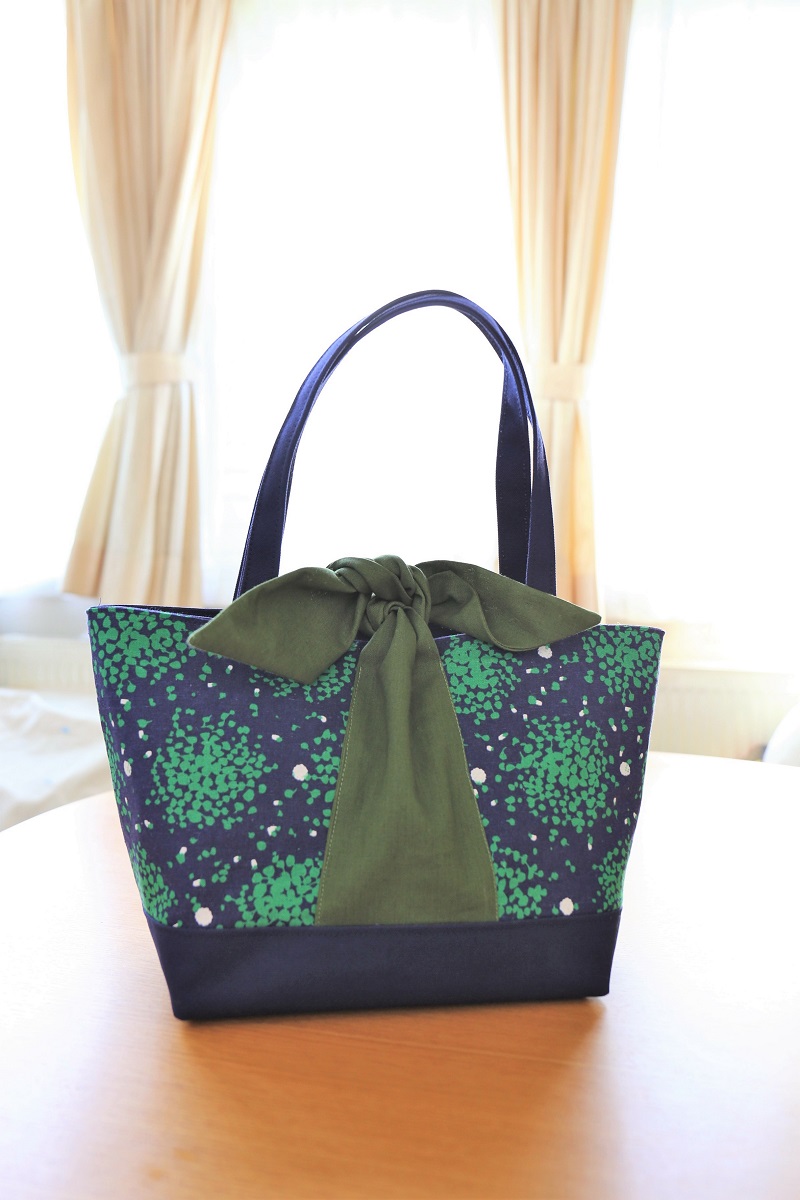



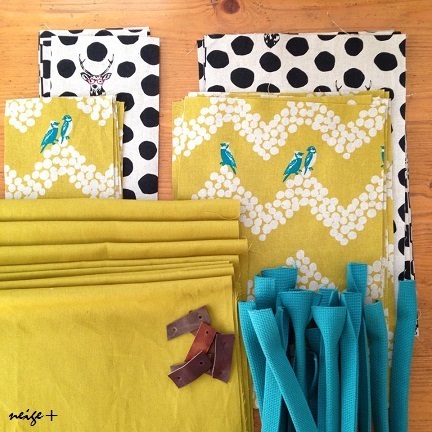
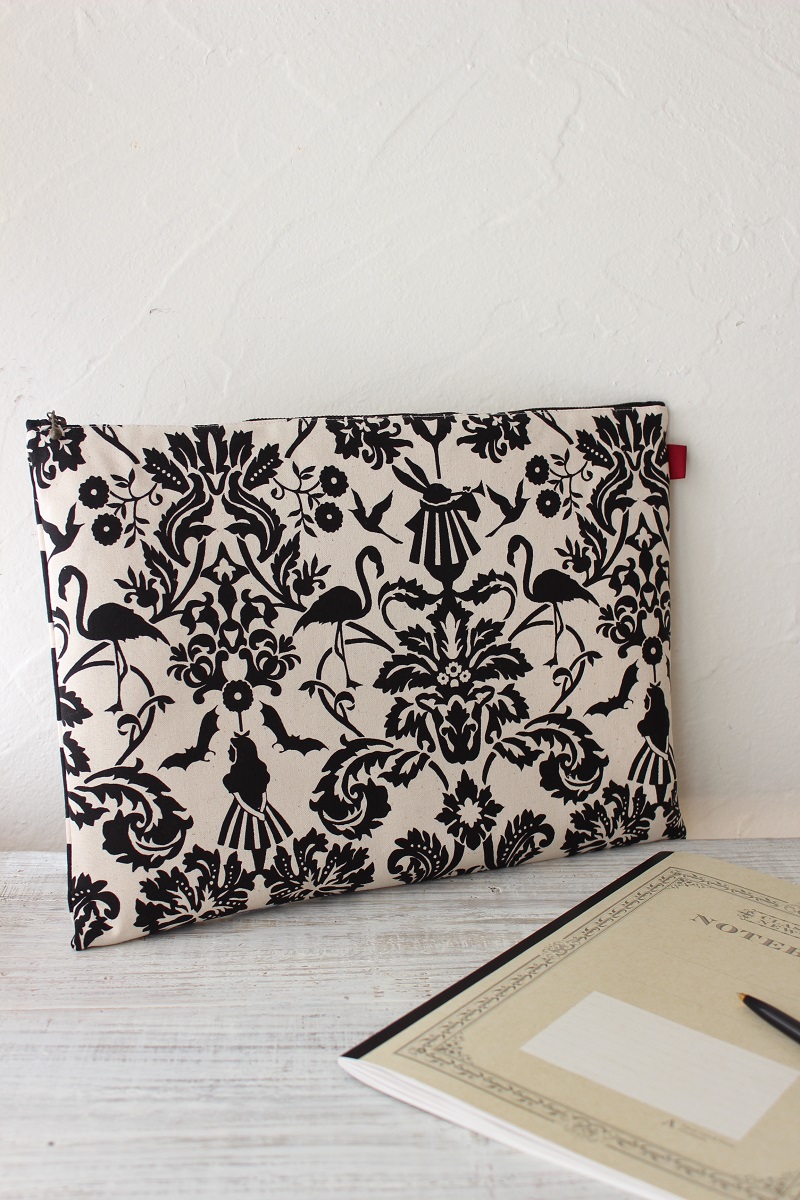

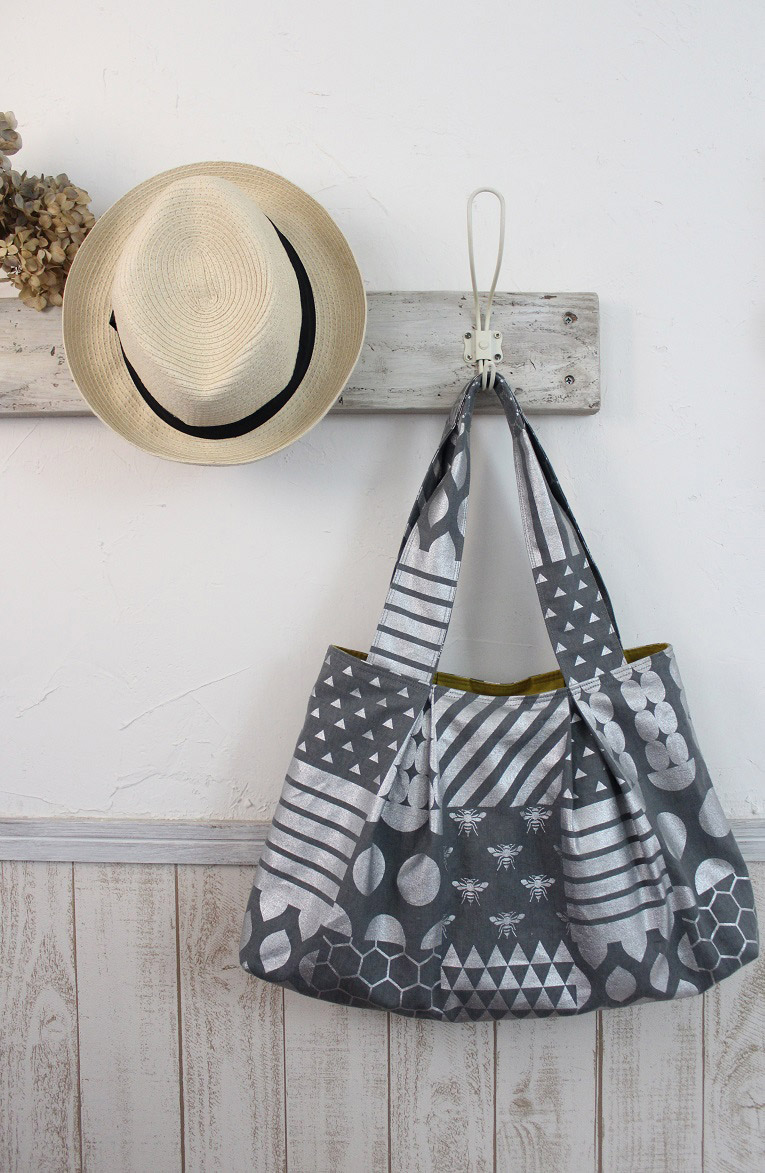
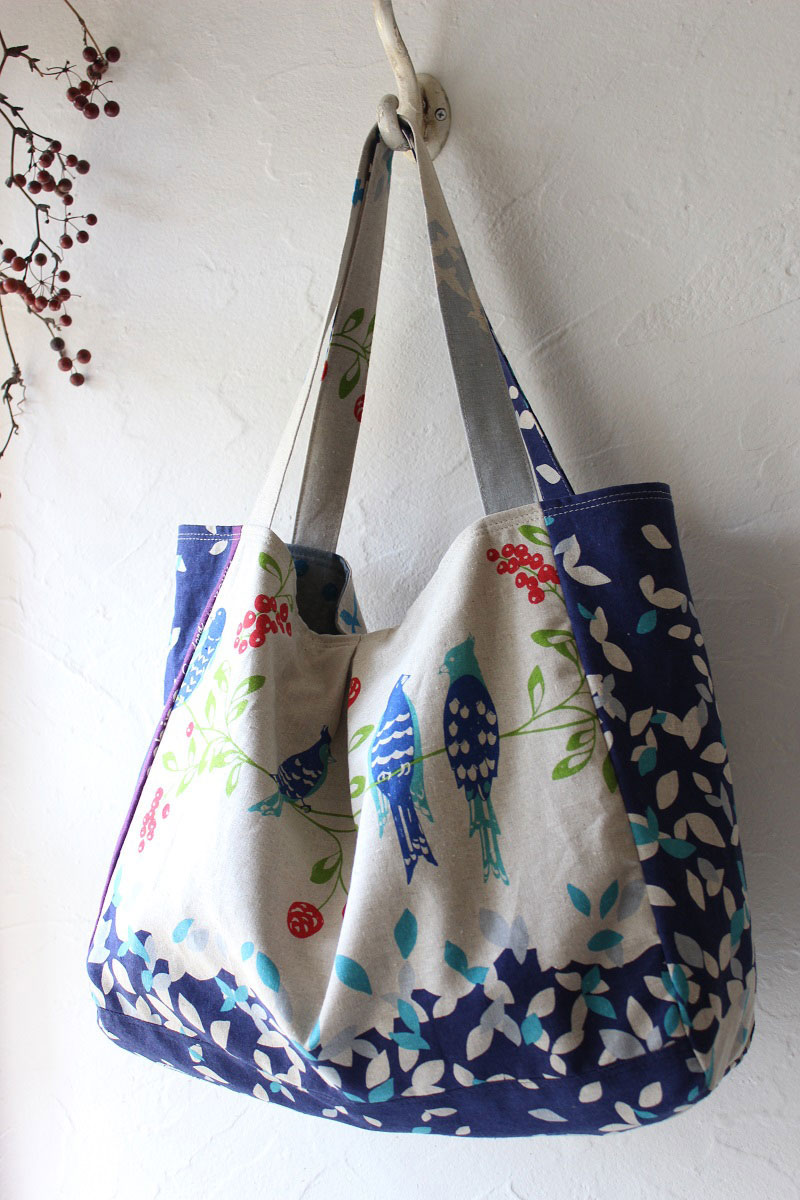

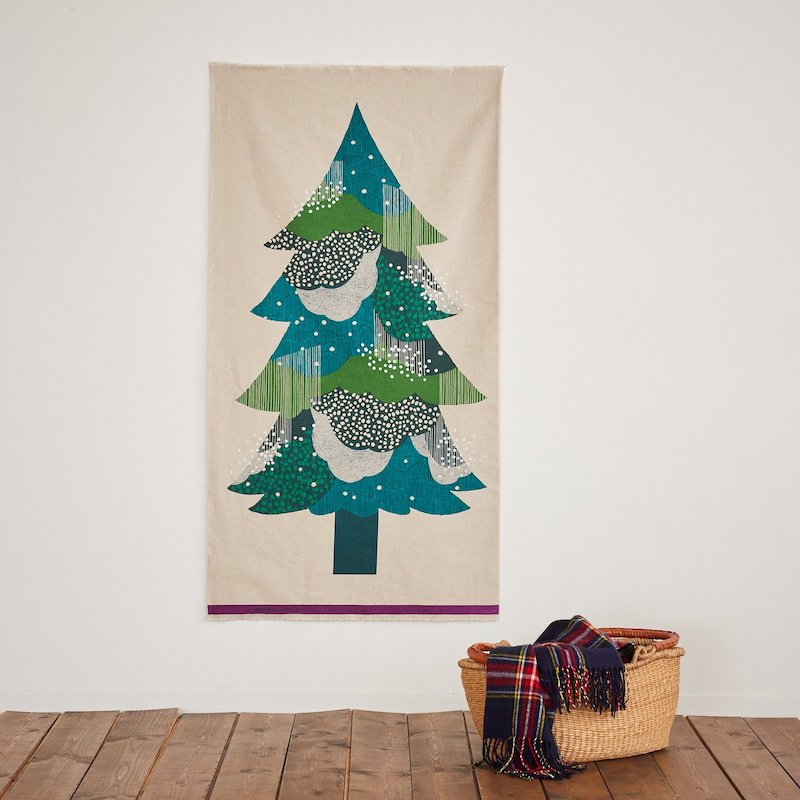
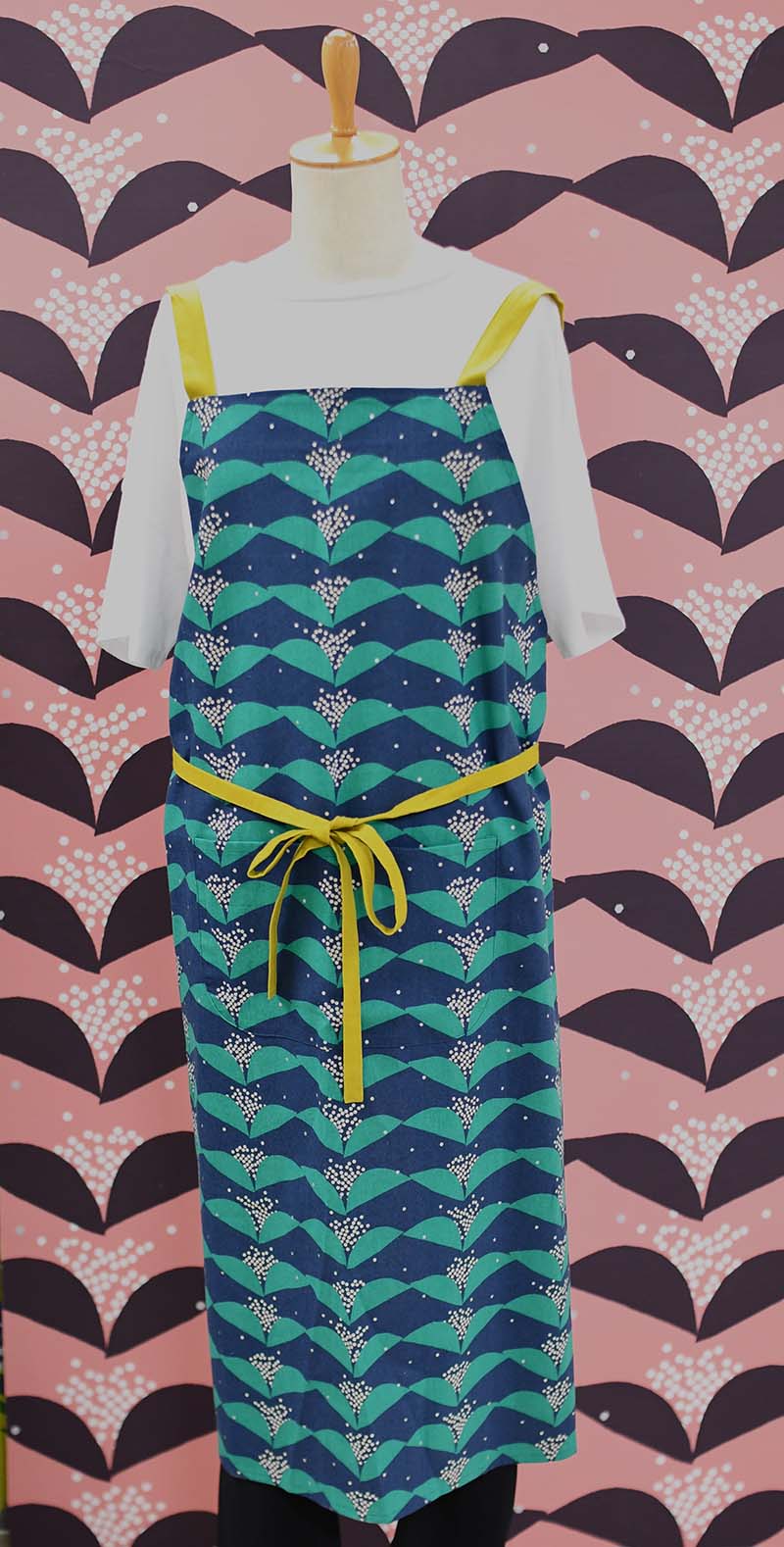
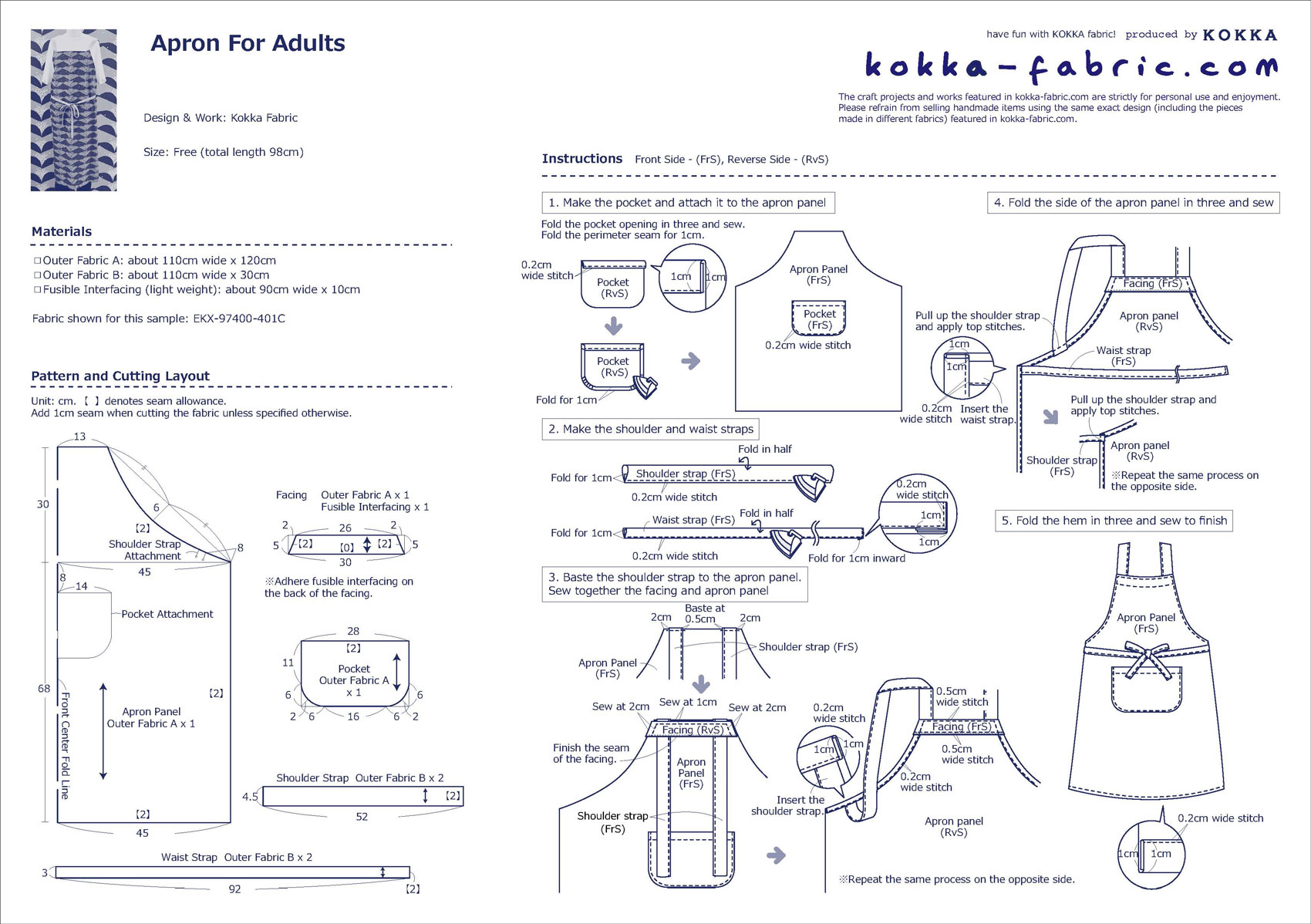

 Fluffy Silhouette Long Skirt with Tucks– Sewing Instructions
Fluffy Silhouette Long Skirt with Tucks– Sewing Instructions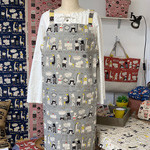 Adult Apron
Adult Apron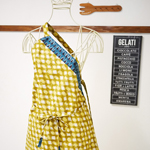 Single Shoulder Strap Apron – Sewing Instructions
Single Shoulder Strap Apron – Sewing Instructions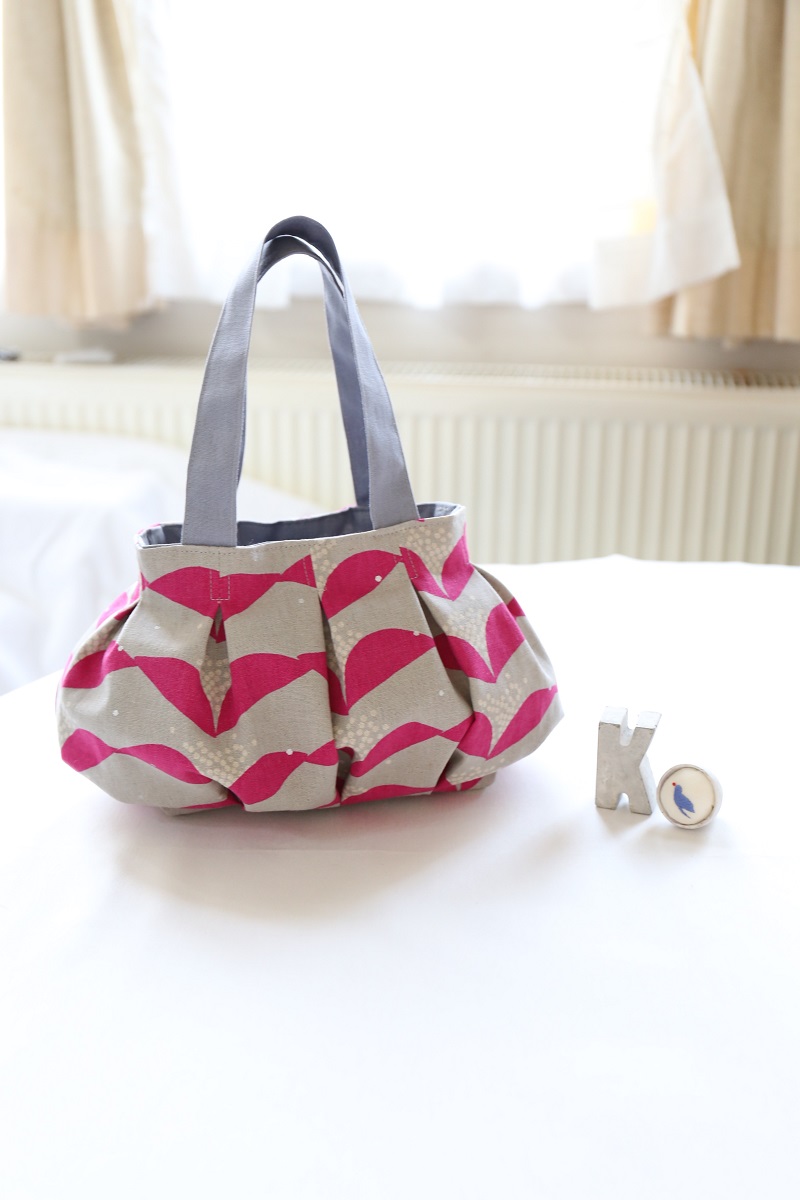
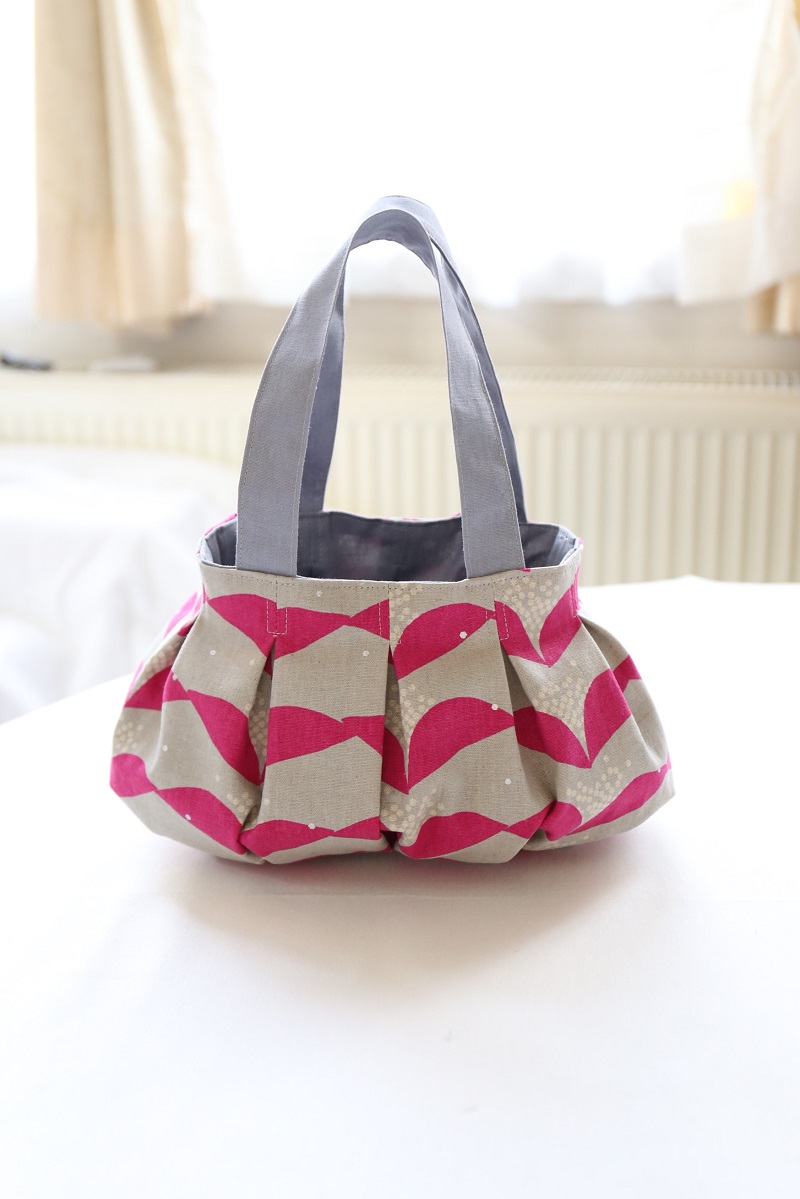
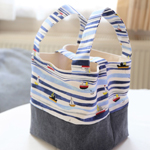 Square Bag in Marine Motif Fabric – Sewing Instructions
Square Bag in Marine Motif Fabric – Sewing Instructions